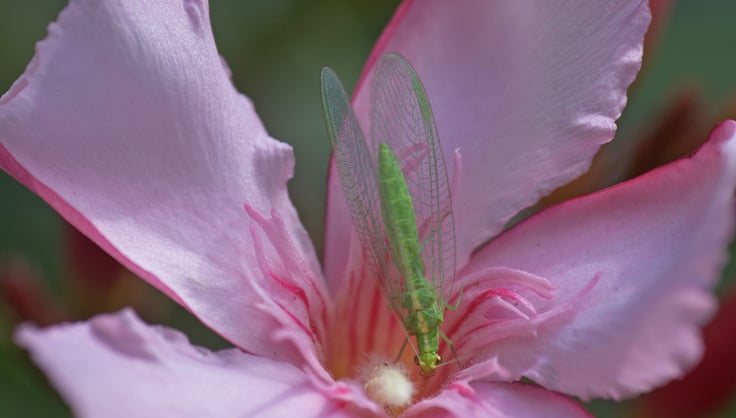Lacewing

Lacewings are slender, bright green flies with delicate veined wings and long antennae. Adult lacewings eat pollen, nectar, and the honeydew of aphids and scales. Some species also feed on pests. Lacewing larvae, commonly called aphid lions, are about 3/8″ long with large heads and yellowish-gray, mottled brown bodies. These hungry larvae readily consume many troublesome garden pests including aphids, thrips, mites, and whiteflies. They eat insect eggs as well as the insects. Lacewing eggs are easy to identify; they are held aloft on a threadlike stalk attached to a leaf. There are 1 to 5 generations per year, and they are found throughout North America.
How to Attract Lacewings
- Maintain a ready supply of moisture by placing a shallow birdbath or small pans of water around the garden. If you have a pond or pool in your garden, place stones in the water so adult lacewings may land and drink safely without drowning.
- Plant a variety of flowers to provide a continuous supply of pollen and nectar for adult lacewings. Preferred food sources include alyssum, cilantro, and other herbs from the dill family, and composite flowers such as daisies and asters.
- Purchase a starter community of lacewings and encourage them to take up residence in your garden. Release the insects when pests are present.
Print this Article:
Get the Dirt
Stay up to date on new articles and advice. Please fill out the information below.
